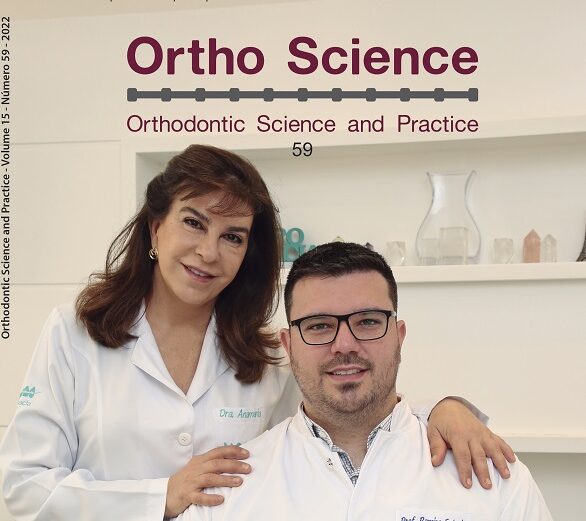Vol. 15 – Number 59 – 2022 Original article Page 63-70 Assessment of craniofacial pattern from northeast Brazil individuals with obstructive sleep apnea – cephalometric study Cauby Maia Chaves Junior¹ Amanda Barroso de Oliveira Martins2 Manoel Alves Sobreira Neto3 Alexandre Moro4 Thais Moura Guimarães5 Cibele Dal Fabbro6 Abstract The identification of craniofacial patterns associated to the Obstructive Sleep Apnea (OSA) continues to arise interest, especially since anatomical predisposing factors differ from group to group. The aim of this study was to identify the craniofacial patterns and cephalometric characteristics in Brazilian individuals with OSA born in Ceará – Northeast Brazil. Materials and Methods: fifty OSA volunteers diagnosed with a polysomnography were selected. The control group consisted of 25 adults from Ceará with normal dental occlusion and without reports of OSA signs or symptoms. All participants were submitted to clinical, polysomnographic, and cephalometric evaluation. Results: Individuals diagnosed with OSA showed alterations in skeletal anatomical structure, mainly a lower positioning of hyoid bone (p=0.001) and mandibular retrusion (p=0.012). Alterations have also been observed in the pharyngeal soft tissue dimensions, mainly an increase in soft palate length (p=0.001) and width (p=0.001) causing a reduction in posterosuperior airway (p=0.001). Only the cephalometric variables SNA (anteroposterior position of the maxilla) – (p=0.739) and EAP (inferior pharyngeal airspace) – (p=0.268) did not present differences between the groups. Conclusion: Cephalometric measurements representative of the positioning of skeletal structures and the dimensions of pharyngeal soft tissues were significantly different when a group of subjects with OSA was compared to subjects of a control group. Descriptors: Obstructive Sleep Apnea, cephalometry, polysomnography, snoring. 1 Titular Professor of Orthodontics – UFC, Undergraduate Professor and Scientific Initiation Advisor, Master and Doctorate in Dentistry – UFC. 2 Scholarship holder of the Institutional Scientific Initiation Scholarship Program PIBIC – UFC. 3 Adjunct Professor – Faculty of Medicine – UFC. 4 Full Professor – UFPR. Graduate and Postgraduate in Orthodontics, Professor of the Master’s and Doctoral Program in Clinical Dentistry – Universidade Positivo. 5 PhD in Sciences (Sleep Medicine) – Department of Psychobiology – UNIFESP. 6 Associate Professor – Faculty of Dental Medicine – University of Montreal, Researcher at the Center for Advance Research in Sleep Medicine & Stomatology – Universite de Montreal & CIUSSS Nord Ile de Montreal / CHUM – Montreal – QC – Canada. DOI: 10.24077/2022;1559-0260922
This content is restricted to site members. If you are an existing user, please log in. New users may register below.
LEIA MAIS

